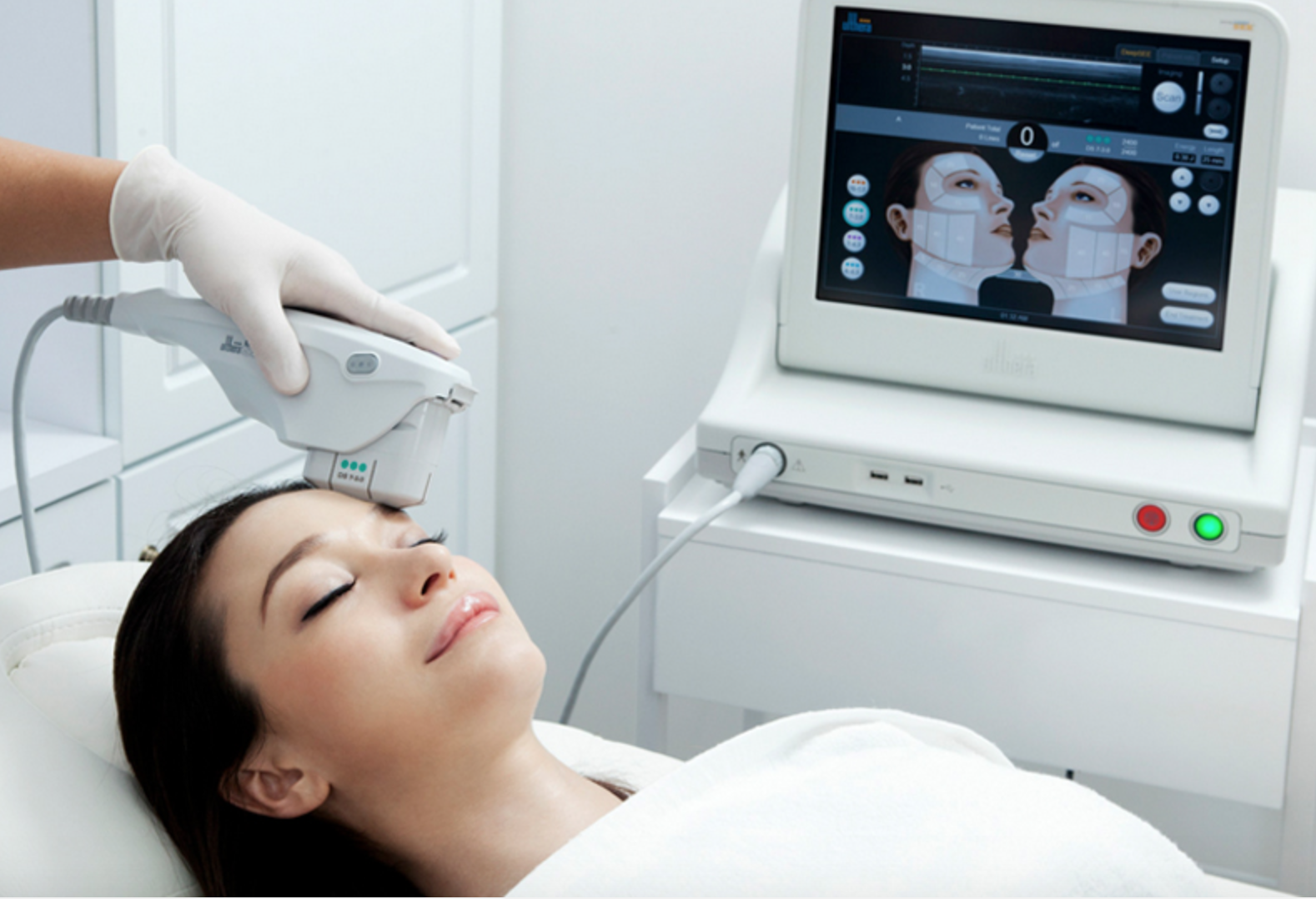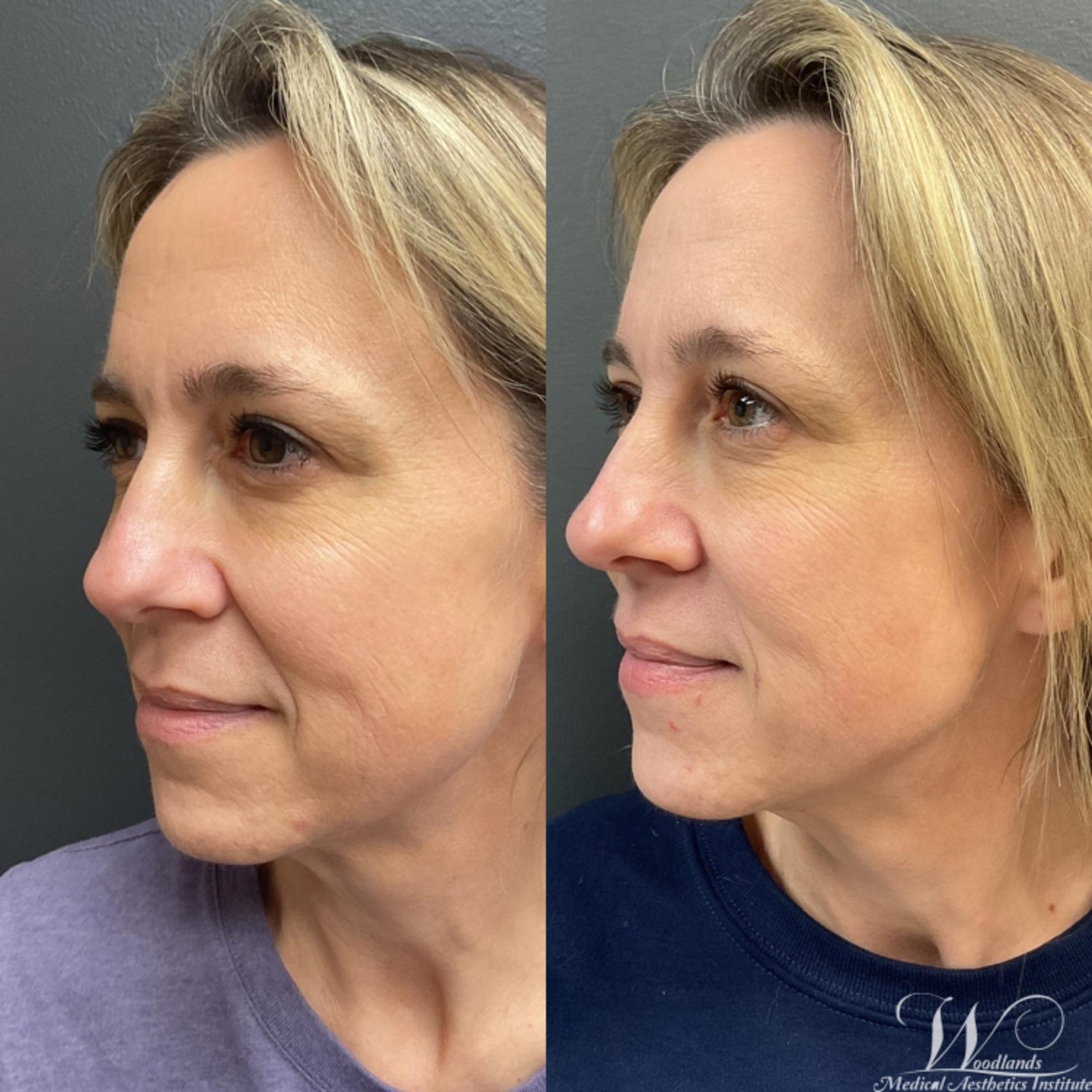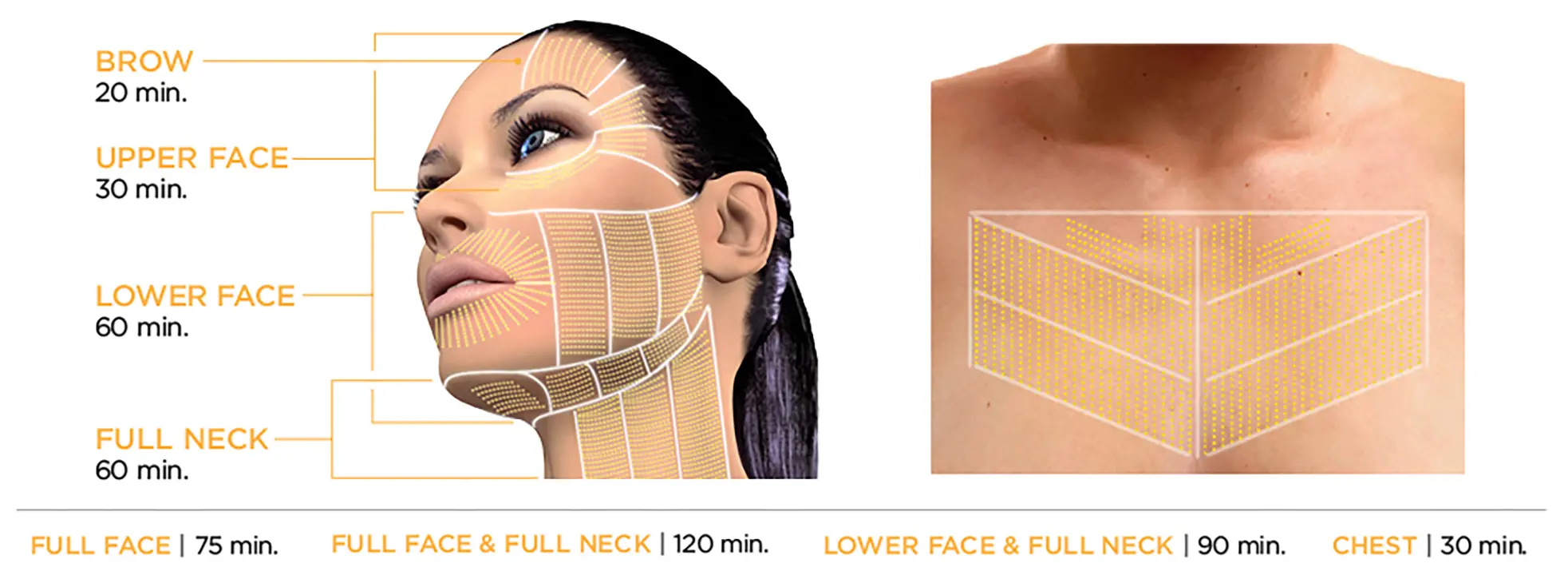Why Ultherapy May Be Clinically Required: Checking Out the Reasons for a Non Surgical Lift
Ultherapy is gaining interest as a viable choice for people dealing with skin laxity as a result of aging or details medical conditions. This non-surgical therapy boosts collagen production, supplying an option that stays clear of the healing time connected with invasive treatments. As individuals look for to improve not only their look yet also their general skin wellness, recognizing the situations that warrant Ultherapy's use ends up being important. What aspects add to its clinical need?
Understanding Ultherapy: What It Is and How It Functions
Ultherapy, a non-invasive cosmetic treatment, utilizes ultrasound innovation to promote collagen manufacturing and advertise skin tightening. By delivering focused ultrasound energy deep right into the skin, it targets the foundational layers usually resolved in medical renovations. This process encourages the body's natural healing action, resulting in gradual lifting and tightening up of the skin in time.

Therapy sessions generally last in between 30 to 90 mins, depending on the size of the area being dealt with. While outcomes may not be quickly noticeable, excellent results typically appear within 2 to 3 months as collagen remains to establish. Ultherapy deals a compelling non-surgical option for people seeking skin renewal without the demand for invasive treatments.
The Aging Refine: Effects on Skin Elasticity and Collagen
Aging undoubtedly brings changes that lessen skin flexibility and collagen manufacturing, bring about visible indications of sagging and creases. As individuals age, the skin's ability to preserve dampness decreases, leading to a drier and less durable surface area. Collagen, an essential protein liable for skin framework, likewise decreases, causing the skin to lose its firmness and younger appearance. Factors such as sun direct exposure, toxic wastes, and way of life choices additionally increase this decrease in skin high quality.
This loss of flexibility and collagen creates a cascade of modifications, consisting of the development of jowls, deepening nasolabial folds, and a total drooping look. The skin's support group damages, making it much more prone to the effects of gravity. Lots of people seek interventions like Ultherapy to battle these aging effects, intending to restore a much more youthful, tight look without the need for intrusive medical treatments.
Clinical Conditions That May Advantage From Ultherapy
Ultherapy is progressively identified for its possible advantages in resolving various medical problems. Individuals experiencing skin laxity, those in post-surgical recuperation, and individuals with chronic skin problem may discover this non-invasive therapy advantageous. By boosting collagen manufacturing, Ultherapy can boost skin firmness and improve total look for these teams.
Skin Laxity Concerns
Skin laxity can be a considerable issue for individuals experiencing numerous medical problems that impact the honesty and flexibility of their skin. Conditions such as Ehlers-Danlos disorder, which interrupts collagen manufacturing, can bring about early skin aging and sagging. In addition, people with autoimmune conditions might experience skin modifications that contribute to laxity. Hormone changes, particularly throughout menopause, likewise play a duty in reducing skin firmness. Ultherapy, utilizing ultrasound technology, targets the much deeper layers of skin, promoting collagen production and tightening the impacted areas. This non-invasive treatment may provide a viable service for those looking for to deal with skin laxity resulting from these clinical problems, improving both look and self-worth without the need for surgical intervention.
Post-Surgical Healing Help
Post-surgical recuperation can often present difficulties, especially for people experiencing skin laxity due to surgical interventions. Ultherapy works as a prospective aid in this circumstance, using ultrasound modern technology to boost collagen manufacturing and boost skin tightness without invasive procedures. Clients that have actually undergone surgical treatments such as renovations, lipo, or other body contouring procedures may find that Ultherapy enhances their recovery by addressing uneven texture and laxity that can occur post-operation. This non-surgical approach can lead to boosted aesthetic end results, potentially lowering the need for extra surgical interventions. It may aid ease discomfort associated with the recovery procedure, offering clients a more all-encompassing recuperation experience. As a result, Ultherapy can be an important option in post-surgical treatment.
Chronic Skin Problem
For people experiencing persistent skin disease such as acne scars, rosacea, or laxity as a result of aging, non-invasive therapies may supply considerable alleviation and enhancement. Ultherapy has become a promising alternative, using ultrasound technology to stimulate collagen production deep within the skin. This procedure can enhance skin appearance and elasticity, resolving problems like irregular skin tone and drooping. Specifically, those Your Domain Name with rosacea may experience reduced inflammation and swelling, while clients with acne marks can gain from boosted skin smoothness and general look. Importantly, Ultherapy gives a non-surgical alternative that decreases recovery time and dangers connected with invasive treatments, making it an appealing option for people looking for effective administration of persistent skin problem.
Mental Influence of Sagging Skin and Aesthetic Worries
The psychological toll of aging typically shows up in the kind of sagging skin, which can considerably influence an individual's self-esteem and general emotional health. Many individuals connect vibrant appearances with power and attractiveness, causing feelings of insufficiency when confronted with noticeable signs of aging. This viewed decrease in appeal can cause social stress and anxiety, withdrawal from social interactions, and a boosted preoccupation with one's appearance.
Individuals may feel compelled to seek visual treatments to fight these problems, as the desire to maintain a younger appearance can become intertwined with personal identity. The emotional effects of drooping skin might also lead to anxiety or a lessened quality of life. Non-surgical choices like Ultherapy arise as possible options, intending not only to rejuvenate the skin but additionally to bring back self-confidence and a positive self-image, eventually dealing with the much deeper emotional implications of aging.
Comparing Ultherapy to Typical Surgical Options
When contrasting Ultherapy to standard medical choices, significant differences emerge in both cost-effectiveness and recovery time. Ultherapy deals a non-invasive technique that usually causes reduced expenditures and very little downtime for individuals. In contrast, surgical lifts typically require more monetary investment and an extensive recovery period.
Cost-Effectiveness of Ultherapy

Traditional medical lifts often come with considerable in advance prices and extended recuperation times, Ultherapy presents a compelling choice that can provide similar outcomes at a portion of the rate. The ordinary expense of a surgical renovation can vary from $7,000 to $15,000, while Ultherapy therapies generally fall in between $2,000 and $4,500, depending upon the area treated and service provider knowledge. In addition, the absence of extensive pre-operative assessments and post-operative care related to Ultherapy additionally adds to its cost-effectiveness. This approach not just decreases economic strain yet also allows patients to invest in other elements of their health and well-being. By doing this, Ultherapy becomes a monetarily feasible choice for those looking for facial renewal without the problems of typical surgical treatment.
Healing Time Comparison
Healing time is a significant element in the decision-making procedure for those considering cosmetic treatments. Ultherapy sticks out as a non-surgical option that commonly needs minimal downtime. Most patients can return to their day-to-day activities virtually instantly, experiencing just mild redness or swelling that normally deals with within a few hours. On the other hand, standard medical alternatives, such as renovations, often demand an extensive recuperation duration. Patients may deal with several weeks of swelling, wounding, and restricted activity, with some going back to normal regimens taking up to three months. This stark distinction in recuperation time makes Ultherapy an enticing choice for individuals looking for reliable outcomes without the extensive aftercare connected with surgical procedure, permitting a smoother modification back to day-to-day life.
The Long-Term Advantages of Non-Invasive Treatments for Skin Health
As people increasingly look for choices to operations, the long-term benefits of non-invasive therapies for skin health and wellness become much more evident. Therapies such as Ultherapy, chemical peels, and laser treatment deal substantial benefits without the demand for extensive recuperation useful content times connected with surgical treatment. Density RF Malaysia. In time, these non-invasive options can advertise collagen manufacturing, leading to firmer skin and a more vibrant appearance
In addition, normal non-invasive therapies can boost skin texture, tone, and elasticity, improving general skin wellness. Patients often experience less complications and adverse effects, making these procedures more appealing.
Additionally, the advancing impacts of constant therapies can sustain and extend aesthetic enhancements, permitting people to keep their preferred appearance with minimal downtime. By prioritizing non-invasive methods, people can achieve lasting results while prioritizing their wellness and well-being. Ultimately, the long-term advantages of such techniques highlight their expanding popularity in contemporary skin care.
Regularly Asked Inquiries

Just how Long Does an Ultherapy Session Generally Take?
An Ultherapy session typically lasts in between 30 to 90 mins, depending on the therapy location. Elements such as the individual's particular requirements and the level of the treatment can influence the overall duration.

Exist Any Type Of Side Impacts Related To Ultherapy?
Ultherapy can lead to negative effects such as short-term redness, swelling, or tenderness in the cured area - published here Density RF Malaysia. While many people experience marginal discomfort, it is important to seek advice from an expert for individualized advice and possible reactions
Exactly How Soon Can I See Results After Treatment?
Arise from Ultherapy usually start to show up within 2 to 3 months post-treatment. The full impacts may proceed to establish over 6 months as collagen production rises, leading to recognizable training and firm of the skin.
Is Ultherapy Suitable for All Skin Kinds?
Ultherapy is normally suitable for various skin kinds, including lighter and darker tones. Specific skin problems and worries may impact its performance, making appointments with a certified expert important for customized referrals.
Exactly How Usually Should Ultherapy Treatments Be Repeated?
Ultherapy therapies are generally advised every 6 to one year, depending on individual skin problem and desired outcomes. Regular evaluations by a qualified specialist can aid figure out the best frequency for upkeep and performance.